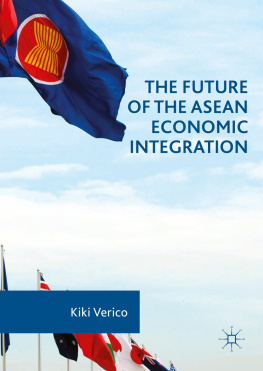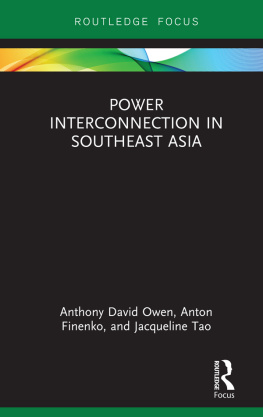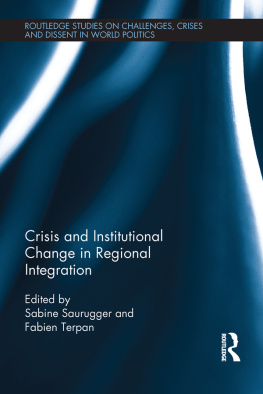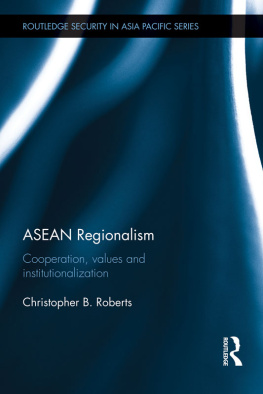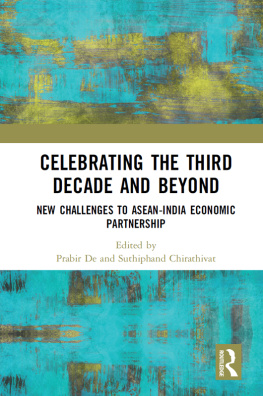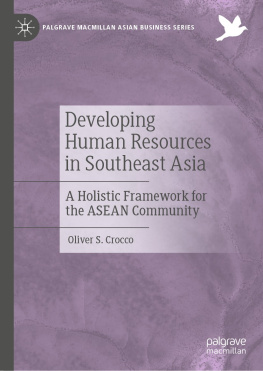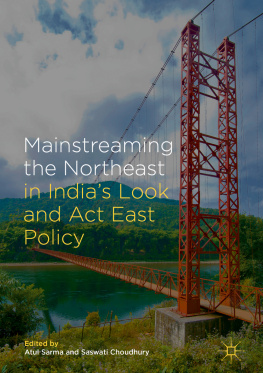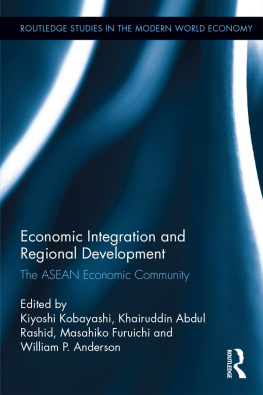1.1 Context
There are five types of trade and investment liberalization: (1) Unilateral; (2) Bilateral; (3) Sub-Regional; (4) Regional; and (5) Multilateral. This study will review three of these types (Sub-Regional, Bilateral, and Regional and Regional Plus) in the context of Southeast Asian economic cooperation. The unilateral level will be excluded as trade and investment liberalization had been conducted independently regardless of whether other countries liberalized their market or not, while the multilateral level is beyond the scope of this study that has a regional-level focus.
These three levels of analysis will focus on the impact of various levels of economic cooperation on Foreign Direct Investment (FDI) inflows. The first analysis reviews the impact of ASEAN Free Trade Areas (AFTA) regional economic cooperation. The second analysis analyses the impact of direct Bilateral Free Trade Agreements (BFTA) on FDI inflows. This study will analyse BFTA at country level. The third analysis discusses the Association of South East Asian Nations (ASEAN) sub-regional cooperation. It adopts limited ASEAN member states cooperation on natural rubber products. This study chooses natural rubber because some Southeast Asian countries, in particular Thailand, Indonesia, and Malaysia, are the worlds main producers of natural rubber, which explains why natural rubber has been included among the top 11 priority products for the ASEAN Economic Community (AEC) 2015 to enhance trade and investment integration in Southeast Asia . In order to conduct this analysis, this study will focus on the International Tripartite Rubber Organization (ITRO), which has control over 65 percent of production on the world natural rubber market.
All of these analyses at the regional, bilateral, and sub-regional level attempt to assess the impact of ASEANs trade arrangements towards its investment inflows. This is both by theory and empirical evidence within the European Union (EU) context, the key success factor in achieving an economic community . Since, from the end of 2015, ASEAN has been preparing its economic community, this study will also discuss the AEC .
This study discusses the potential success factors for the AEC 2015 based on the implementation of ASEAN-PLUS Frameworks such as ASEAN China Free Trade Area (ACFTA), ASEAN Japan FTA, ASEAN South Korea FTA, ASEAN Australia New Zealand FTA and ASEAN India FTA. Given the EUs experience and regional economic integration theories that have been derived from this empirical evidence, the Economic Community (EC) phase will be the longest period in the AECs regional economic integration, which starts from FTA to Single Currency. Empirical evidence from the EU and other theories show that EC is the key success factor for a region to move forward from intra-trade cooperation to investment cooperation both of which are the necessary conditions for monetary union and a single currrency. Monetary union is also known as a political union that requires fiscal policy harmonization such as the Stability and Growth Pact (SGP) in the EU. Therefore, it is essential to discuss the future of ASEAN monetary integration after the discussion about the AEC 2015. Discussion of the AEC is very important in order to assess ASEANs future financial integration. This will be discussed in Chap..
This study considers Indonesia, the largest economy and population group in Southeast Asia with stable positive economic growth during the global financial crises in 2008 and the recent global economic turmoil that arose because of economic instability in the USA, Europe, and, recently, in China. It is essential to place Indonesia as the centre of this studys story both in discussing ASEANs current economy and its potential future.
1.2 ASEAN Economic Cooperations Overview
In addition to the ASEAN FTA there are several other sub-regional economic cooperation agreements that involve a selected number of ASEAN member states. The first sub-regional economic cooperation was established in 1993 just a year after AFTA was officially signed. It is known as the IMT-GT (Indonesia, Malaysia, and Thailand-Growth Triangle). One of the major objectives of this organization is to enhance export competitiveness and investment ( www.imtgt.org ). A year later, in 1994, Indonesia and Malaysia invited Brunei and Philippines to establish another sub-regional economic cooperation called the BIMP-EAGA (Brunei, Indonesia, Malaysia, and PhilippinesEast ASEAN Growth Area). This organization focuses on infrastructure and investment at the sub-regional level ( https://www.adb.org/countries/subregional-programs/bimp-eaga ).
In 2001, Thailand, Indonesia, and Malaysia established the International Tripartite Rubber Organization (ITRO), another sub-regional economic cooperation. This organization controls a particular product, natural rubber, with a specific supply management scheme (SMS)a supply-side policy to control production quantityand an agreed export tonnage scheme (AETS) to control the quantity of trade. Both policies are designed to maintain oligopoly market power. The higher the oligopoly market powers of a certain primary product, the higher are the incentives for investors to invest FDI in that product (Pindyck and Rubinfeld ). ITRO is expected to attract FDI inflows for natural rubber as its production and trade quota have been predicted to increase its oligopoly market power.
At the bilateral level, BFTAs are expected to attract investment from advanced countries and non-member states. Yet a BFTA itself creates a dilemma for its regional FTA. On one side, member states receive benefit from establishing BFTAs, though, given the difference in economic levels among member states, such benefits will differ between more advanced and less advanced member states, which will increase the economic gaps within the member states. However, since no member state of a regional FTA wants to be left behind when its fellow members establish a direct BFTA with non-member states from advanced economies, other member states will also make BFTAs, regardless of the risks.
BFTAs make trade arrangements very complicated as a result of their substitution effect on regional trade arrangements, which increases the economic gap between regional member states thus opposing the main objective of the regional trade agreements (Panagariya ).
At the regional level, ASEAN, which was established in 1967, signed its first preferential trade arrangement (PTA) in 1977 yet only achieved its common free trade areathe ASEAN Free Trade Area (AFTA)in 1992 which took effect in 1999. AFTA had three stages of negotiations (Nesadurai , p. 856). Therefore, trade and investment liberalization is important, not only for its regional member states but also for non-member states.
The AFTA imposes trade discrimination policies at the regional level between Southeast Asian countries as member states and non-Southeast Asian countries. The AFTA also implements the CEPT as the internal tariff for member states with a maximum 5 percent for inclusion list products (liberalized product) of ASEAN-6 by 2002 and 2010 for ASEAN-4 (ASEANs newer members, Cambodia, Laos, Myanmar, and Vietnam). ASEAN is currently attempting to enhance its regional trade liberalization in the AFTA by increasing its attractiveness for long-term investment creation of FDI. In order to advance trade liberalization at the regional level, ASEAN decided to deepen its CEPTs implementation tariff down to 0 (zero) percent in 2010 for ASEAN-6 and 2015 for ASEAN-4. This combination of full-trade liberalization at regional level (CEPT of 0 percent) and FDI inflows increase is believed to be a good start for ASEAN towards achieving the AEC of 2015.

